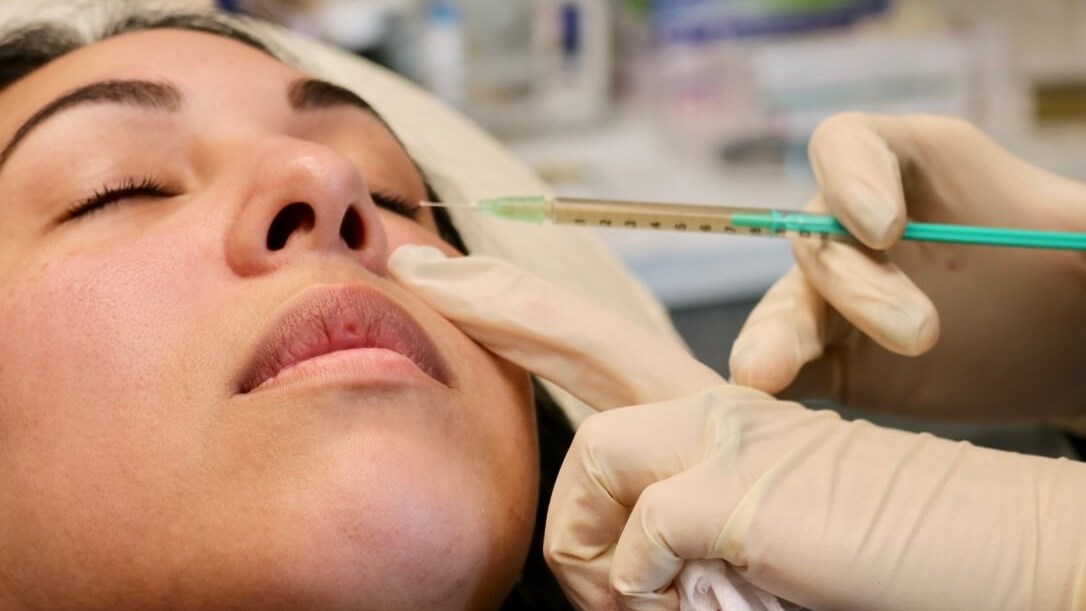Sonterra Dermatology Brings PRP To Cosmetic Patients
&srotate=0)
Think of PRP, or platelet-rich plasma, as that little extra something that can be added to almost any medical-based procedure to stimulate growth and healing. Many among the medical world consider PRP “liquid gold” because it is naturally abundant, easy to use, and works quickly as well as effectively. Simply put, a patient’s own blood can now be used to heal them.
For a long time, PRP has been used with pain management and orthopedics. It has since made its way to Dermatology and is being used with hair restoration, skin resurfacing, to add volume in the skin where volume’s been lost, and with vaginal rejuvenation, which covers incontinence to increased orgasmic abilities! Liquid gold, right?!
“Platelets are like first responders,” says Dr. Annabelle Garcia, Owner at Sonterra Dermatology and Board-Certified Dermatologist. “We all have them as a component of our blood.” And they are important, according to Garcia. When a person sustains a cut or wound, it is the platelets that spring into action first to stop bleeding and promote healing.

PRP Preparation
Before PRP is administered, it first has to be produced. To get it, a medical professional will take a blood sample from the patient and put it into a machine called a centrifuge.

The centrifuge spins quickly, separating the components of the blood. What they want are the platelets. When the blood components separate, the platelets usually look a yellowish color.
Dr. Garcia will use these platelets by injection or for topical use.

1. Hair Restoration

PRP has become a popular method of restoring hair growth and Dermatologists are now using it when hair loss results from alopecia, a common condition that causes hair follicles to shrink. Among men it’s commonly called male pattern baldness.
Once Dr. Garcia has the PRP, she will inject it into targeted areas of the scalp. This will only take a few minutes. Patients describe the process as slightly uncomfortable at times but not painful.

“Following the injections, the scalp feels like it has a very tight ponytail,” said Stephanie R., who suffers from alopecia. “I would describe it as a slight tugging sensation.”
Typically, patients who receive PRP injections for hair loss will start to see some growth as soon as two to three weeks. Because PRP is not a cure for hair loss the patient will typically need to have maintenance injections roughly every six months.
2. PRP Facial (aka Vampire Facial)
What has been referred to as the Vampire Facial is PRP combined with micro-needling. Vampire Facial is a patented, trademarked brand used at Sonterra Dermatology.
Just as with a typical SkinPen procedure, the skin is prepped with a topical numbing solution. As the patient waits for numbing, providers will draw blood, isolating growth factors from it. Next, as the providers uses the SkinPen device to create micro-punctures on the skin, she will apply the patient’s own PRP topically onto the micro-punctures so that the growth factors soak into the tissue stimulating tightening of the skin and overall skin rejuvenation. PRP promotes healing and typically patients experience less reddening of the skin post micro-needling.
3. PRP Injections
When PRP is used to add volume to skin it is sometimes called the Vampire Lift or Natural Filler. Some publications have even referred to PRP used to add volume to the skin as a modern miracle. As stressed often by Dr. Garcia, the key with using PRP as an injectable, is the skill and experience of the injector. “PRP injections are technique-sensitive,” says Garcia. That is why only board-certified dermatologists do injections at Sonterra Dermatology. PRP can be used at multiple injection sites. One of the more common areas it is used is with the eye troughs.

4. PRP Vaginal Rejuvenation (O-Shot)
Any guesses as to what the O stands for in O-Shot? If you’re coyly, shyly, or excitedly thinking orgasm, you are correct. PRP can be injected into the clitoris, labia and G-spot to improve a woman’s ability to orgasm as well as the quality of the orgasm.
PRP injections to the vaginal area can also treat urinary incontinence and help women who suffer from pain during intimacy.
How does it work? Patients will be asked to remove their pants and underwear. A medical professional will apply a numbing cream to sensitive vaginal areas. Blood is drawn, spun in a centrifuge, and enhanced. Dr. Garcia will then inject local anesthetic to the vaginal area. After the PRP is obtained a board-certified dermatologist will inject it at a very precise angle into the vaginal tissue. PRP stimulates stem cells, collagen production and blood vessels, which can plump and tighten the vagina.
A staff member at Sonterra Dermatology who suffers from incontinence and has had to wear a sanitary pad nearly every day for fear of leaks, reported little to no issues with incontinence in the days following her O-shot.
“So many women especially those who have undergone childbirth suffer, often quietly, from some level of incontinence so this is huge for them,” says Dr. Garcia. “The same goes for feminine rejuvenation. It is hopeful and exciting.”
PRP for vaginal rejuvenation costs just under a thousand dollars per treatment. Dr. Garcia says most patients will see a difference with one treatment. Some patients, however, may require two treatments. And with all PRP procedures, maintenance treatments are recommended.
